I have never viewed any of my dogs as possessions. They don’t own me, and I don’t own them. I am their guardian. It is my job to make them feel safe and wanted, always. We co-exist. We share space. We live together. Yes, of course they live with me physically, but what I am talking about is how I view our relationship…I live with my dogs. It isn’t a top-down relationship. We live in harmony with each other. I expect very little of my dogs; the less I expect, the more they give (if that makes sense). This isn’t to say that they are not trained, but they don’t ever have to be perfect little soldiers. They go out the door first for very practical reasons; there is limited space at the top of the stairs, it is safer for me to let them go first. They lead the walks they go on, and they are walked on 20-foot-long lines, in the woods where they have the latitude to meander and engage with the environment in a more natural way. They eat before me or while I am eating my dinner, most of the time we eat together like a family would. And yes, my dogs sleep with me if they want to and most of the time they want to. Quality sleep is essential to overall health for both humans and canines. My dogs like me seek a comfy place to sleep, and because they would rather be with me than sleep alone on their beds or the couch, they are always welcome in my bed. My dogs bark, make noise, play rough, knock things over, get dirty, bring mud in the house, refuse to go out in the rain, turn their noses up at dinner, sometimes skip meals, pester the cat, follow me in the bathroom, are very nosey, have no concept of personal space, and steal the cat’s food whenever they get the chance. And that’s all okay. They are, after all, dogs. They are not robots, to be programed to behave in unnatural ways. They are sentient beings with opinions and feelings, needs and desires and to treat them as anything less is a disservice to them and to your relationship.
I thought about Marty, who was left alone for 10 plus hours a day, and how he had to eat off of the same floor he relieved himself on, how he was surrendered twice by two previous owners to two different shelters, and how frightening that must have been for him, and how the kindness of the animal control officer at the last shelter saw his potential, and how we drove two states away to bring him to where he was right now…safe in my bed. I thought about all that trauma and how trauma is stored in the body and impacts every facet of existence. And I wept knowing that neither of these dogs would ever have to worry about being abandoned, neglected, feeling alone, going hungry or feeling unsafe again.
It has been both an honor and privilege to not only live with these two dogs, but to watch them develop their relationship with each other and be a part of that unique experience. I cherish having the opportunity to enjoy the individual relationships we share and just spending time with each other without any expectations. Whether you spend time with your dog just snuggling in your bed or sitting in the grass feeling the sun on your faces and the breeze in your hair, never forget the most important parts of life are that we all deserve the experience of freedom, connectedness and peace. Special thanks to: Blooper Animal Rescue & Transport Baypath Humane Society Hartford Animal Shelter Partnered with Hartford Police Department
0 Comments
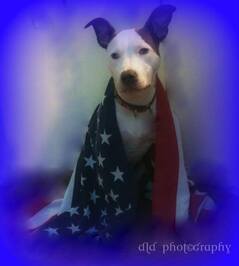 While July 4th may be a day or weekend of celebration for you, it could also become your worst nightmare, if you live with a dog who is bothered by the loud booms, as many dogs are. It is estimated that on or around July 4th celebrations, more dogs go missing than at any other time of the year. And many of those dogs never make it back home. Ask any animal shelter worker and they will tell you, it is one of the busiest days of the year. Many people live with dogs who are already struggling with anxiety, or who may become very distressed with thunder, sudden loud noises, and of course fireworks. When dogs get scared they run. If your dog is afraid of loud noises, it could be a dangerous day for them. So here are some “dos and don’ts” to keep your dog safe and as comfortable as possible:
Omega Paw Tricky Treat Ball Ethical Contempo Tessa 9. Consider trying the Anxiety Wrap: http://anxietywrapsays.blogspot.com/2012/02/comparison-of-anxiety-wrap-thundershirt.html Ace Bandage Wrap: https://www.youtube.com/watch?v=9dllmTWBUlsaround Sometimes the applied pressure of a wrap helps a dog feel secure. 10. Dogs flee when scared, their natural flight or fight instincts come into play and this is when dogs will bolt out of an open door. Be aware of entrances and exits. DON’T:
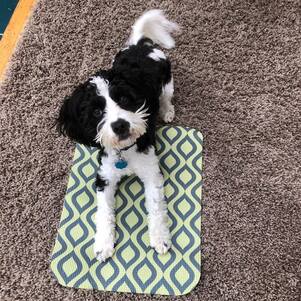 Commands vs Cues: It’s often that I hear from new clients “my dog knows their commands, but I want them to know more commands.” At this point in the conversation I often take the opportunity to talk about “commands” vs “cues”. Some people might think there is no difference, but really there is, and that difference doesn’t lay in the semantics as much as the difference the in the mindset behind it. The definition of a command is to “give an authoritative order” or “to have control or authority over”. I follow a humane and caring approach to training, so this mindset is not part of my training style and I do my best to teach my human clients in the same concepts and in the same manner. Additionally, the use of “commands” has been typically associated with compulsion training and the use of aversive tools such as choke, prong and shock collars. As a positive reinforcement dog trainer, these tools are not part of my tool box, if the dog makes a mistake or doesn’t get it right, they simply don’t get rewarded, but do get to try again. So, while I may adhere to some strict teaching mechanics and learning principals, I strive during every training session to keep learning fun for my canine clients, therefore dominance and control over them is not part of the experience. It is because of this philosophy my human students never hear the word “command” come out of my mouth, because my mindset is quite opposite. Teaching and Cues: When we teach a dog a new skill or behavior, we can do so through a few avenues:
As previously mentioned one the of the easiest behaviors to capture is a sit, because dogs are always plopping into a sit in front of us, beside us and behind us. It is a natural physical action that dogs are always doing whether we are asking them to or not. If we acknowledge and reward that sit with the right timing and consistency, the dog will offer that behavior to us when we ask. Because dogs do what works and always have their eye on the prize, it is easy to reinforce any behavior a dog performs, even the ones we don’t want (like jumping up), but that is a whole other blog post. Once a dog has learned a behavior and we have added in the cue, we know we have done everything correctly, 1) built a strong association between the behavior and the cue and 2) have the behavior under stimulus control if:
The first behavior I teach any dog is attention or eye contact, for it is the mother of all behavior. If you can’t get your dog to pay attention to you, at the very least your training will be very difficult and you will have inconsistent results. Eye contact also has many practical advantages when training other skills to a dog like loose leash walking for instance. I once trained one of my dogs to release from a wait at the food bowl with strictly my eye movement! Generally, the easiest way to teach eye contact is through the capturing technique. Clients typically pick an easy one word cue such as “look”, “focus” “eyes-here” etc., and eventually put the eye contact under stimulus control. Often my clients will ask me why can’t I just say their name to get their attention? And I tell them…” because your dog’s name is their name, it is not a cue for attention”. Then I generally hear, “but they always look at me when I say their name?” And I ask…Do they? Really? If your dog’s attention is focused on something else, like a bird or squirrel or even another dog, do they turn and look at you when you call their name? Probably not every single time, and this is one reason why we ought not use a dog’s name to get their attention. The other reason is quite simple, you are likely saying your dog’s several times a day; we talk to our dogs more than we are even probably aware. Next time you are home with your dog take note…you might be surprised. And last but certainly not least, we choose our dog’s names often because of their personality, physical characteristics, geographic location, or circumstances, etc. The reasons are vast, endless and can be deeply personal. When my four-month-old female pit bull came into my life, I was grief stricken over the loss of a dog that I loved deeply, only a few months earlier. This new puppy had been living with a drug addict in a hotel, and would disappear leaving the puppy confined in a crate without food, water or a place to toilet, for days at a time. This puppy needed to be rescued, and so did my heart. I named her Mercy, because I felt that the universe had shown us mercy by bringing us together. For me her name is sacred with deep meaning, but I am always saying it randomly in silly little songs I sing to her, or when I ask her questions like she is going to answer me (yes, we trainers do these things too), she hears it so much that she sometimes ignores me. Her name, is her name, it is not a cue for attention. Mercy is my beautiful, goofy, imperfect dog, and when I say the cue “look-at-me” she knows that it means [I expect you to be front and center staring directly into my eyes, regardless of the moth flying around the kitchen, because now is important that I have your attention]. It is never “Mercy…look-at-me”, just plain “look-at-me”. When we preface a “cue” with the dog’s name, we not only give the dog multiple names, (“Mercy-sit”, “Mercy-come) we create a” dirty” cue. This is a training mistake that I commonly see owners and trainers alike making. It dilutes the cue and it is in my professional sloppy training. Cues need to be “clean” one word, or two words easily spoken (as one), not wishy washy “blah blah blah-look-at-me”, “blah, blah, blah-sit”, “blah, blah, blah-come”. When you have gone to the painstaking work of teaching a behavior and putting under stimulus control (adding the cue), that cue should be treated as a sacred word. Period. Clean cues equal consistent communication between you and your dog, and consistent results in performance. We know that cues can be verbal or hand gestures, but cues can also be the presentation of an object, a scent, sound or touch. A cue can also be an association with something, for instance my dog comes running to me every time she hears me turn on the blow dryer, because since she was a puppy she has loved to have her butt blow dried and she has built an incredibly strong association to the sound. She has also built a strong association with coming in from outside and gives me a lovely auto sit the moment we reach the kitchen counter, which has become her cue. Poisoned Cues: When we give a cue to our dog we are asking them to do something, but sometimes they seemingly all-of-a-sudden won’t. And a dog owner might think that their dog is being stubborn, when in fact what they might have is a poisoned cue. In Karen Pryor’s book “Reaching the Animal Mind” she describes that a poisoned cue occurs when a dog makes an association between unpleasant things and the cue. These unpleasant associations then cause the dog either hesitate to perform the behavior we have asked of them, or not do it at all. But what we think is unpleasant and what the dog thinks is unpleasant are often different. A slight tug on the leash, pulling on our dog’s collar, leaning over the dog can all feel unpleasant enough to poison a cue. But also, unexpected things can occur as well…case in point. I was working with one of my dogs who had learned a beautiful spin behavior. While in the training room, at the exact moment I asked for the behavior a picture fell off the wall. What were the odds? We were both startled and I will never forget my dog freezing mid spin and looking at me stunned. What happened? You guessed it. He never responded to that cue again. The good news is that poisoned cues can be fixed by re-teaching the behavior and putting it on a new, which is exactly what we did. Proofing for Fluency - The Three D’s: Distraction, Distance, Duration: When I think about fluency I think about language, I have worked with many people for whom English has been their second language. For me English is my first and only language. I can speak it, read and write it; I am considered “fluent” in English (although my spell check would tell you otherwise), but for some of my co-workers English has not been their first language or even their second and they would not be considered fluent. A common thing I hear from new clients is “my dog will do this or that, but not consistently” or “he will sit in the living room and sometimes the kitchen, but I can never get him to sit in the back yard”. My question at that point usually is “did you train the behavior in the kitchen or outside?” And generally, the answer is no. Once we teach a dog a new skill, we should be teaching it across all environments. This means every room of the house, because each room is new environment and the new space is a distraction in and of itself. In the training process, we intentionally add in distractions beginning with low level (easy), mid-level (slightly more difficult) and high-level distractions (difficult), as well as outside in the back yard, front yard and side yard if you have one. We do this to ensure the dog has generalized the new skills. Life is filled with distractions, so we add distractions into the training process to ensure that the dog will perform the behavior when you ask him to, even though you might be wearing a Kentucky Derby hat and sun glasses, blowing colossal bubbles with your bubblegum, while the TV is blaring and your bouncing a basketball. I’m not sure I could do all that at one time, but you get the idea. If you put your dog on a ‘sit-stay’ and his favorite person walks into the room, you are still going to want him to hold in his sit-stay position until given his release cue. Then we build duration which is the length of time the dog can perform the behavior. And we add in distance, this is when you ask your dog to perform a behavior from several feet away. Although, one does not necessarily need to precede the other, and can be trained separately, often, we can build distance and duration together at the same time. A Word About Reinforcers and Rewards You wouldn’t work for free so neither should your dog. If your boss asked you to work over your normally scheduled 40- hour Monday through Friday work week on Saturday and Sunday, but offered you the same rate of pay, you might not be as inclined to sacrifice your weekend with no increased incentive. It kind of works the same for your dog. When training with reinforcers the dog (not us) is the one who determines what is reinforcing to them, some dogs are not food motivated at all and would prefer access to something or the opportunity to play with a particular toy. Although I come to a training session with a bait bag filled with tasty chicken liver that all my other clients love, I may find that your dog doesn’t like chicken liver, and maybe doesn’t like chicken at all, but loves turkey. When we are training a new behavior, or increasing the difficultly of the behavior (like adding in duration and distance as mentioned above), we may want to use a super high value reward. One of my dogs loves Wasabi Peas, Tuna and cardboard Paper Towel tubes, and those things are reserved just for training new skills or when adding in more difficulty to a behavior she has learned. She gets these things at no other time. Why? Because they are really-high value to her, and giving them to her all the time might reduce that value. Will she work for kibble? Sure! She will work for lettuce, because she is really food driven, but she gets kibble every day and finds Cheez-It® crackers far more motivating for easy skills and things she already knows. Identifying the right reinforcer for your dog when it comes to training is as important as the training itself. Don’t underestimate this part of your training. Training a new dog (or old) can be an arduous task for some folks and often I hear from clients how much harder it is than they thought it would be. While some behaviors are difficult to un-teach dogs, breaking human behavior patterns that have developed in response to dog unwanted behavior can be the real challenge to change. Training honestly doesn’t have to be hard, you just need a good teacher, a good plan and a willingness to commit to the work and the process. You get out of training what you put in. |
Author:Lee Desmarais-Dog Trainer and Behavior Consultant Archives
August 2023
Categories |
Proudly powered by Weebly
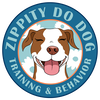
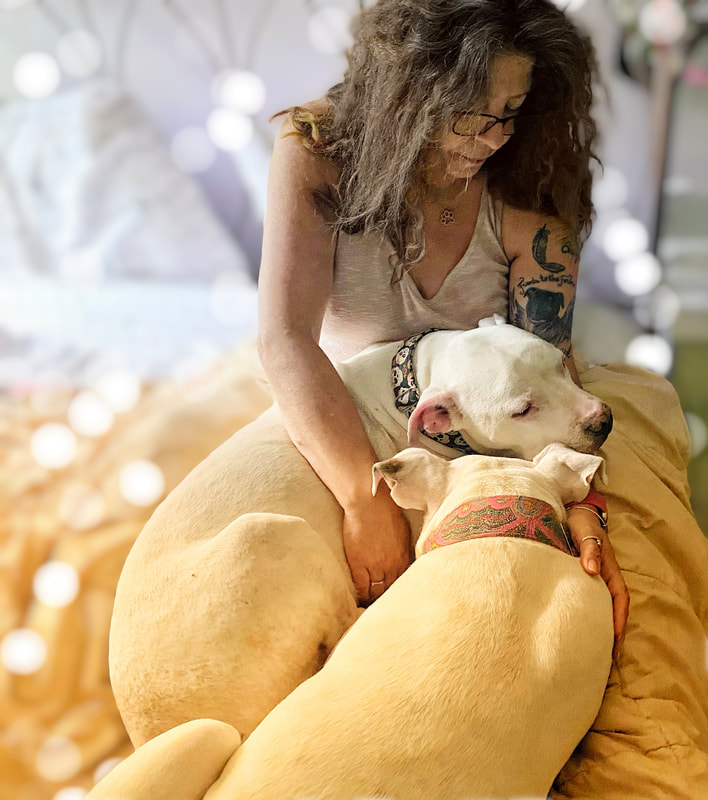
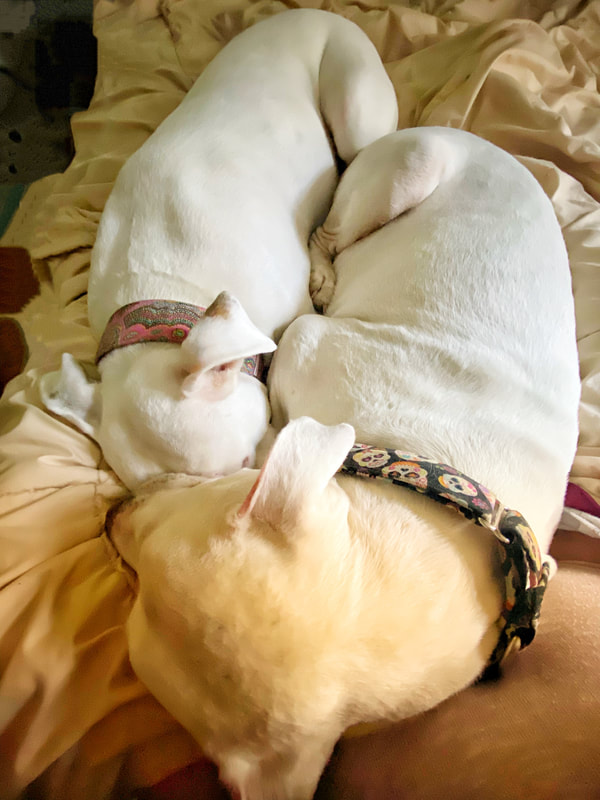
 RSS Feed
RSS Feed